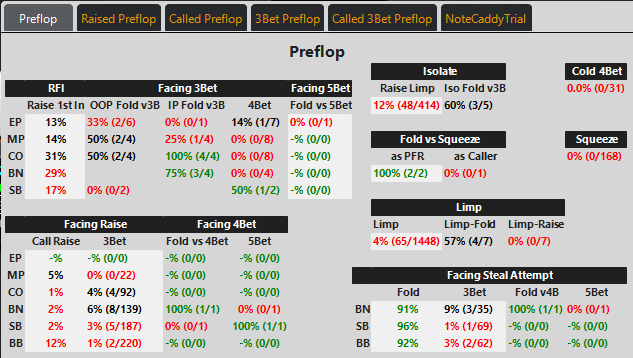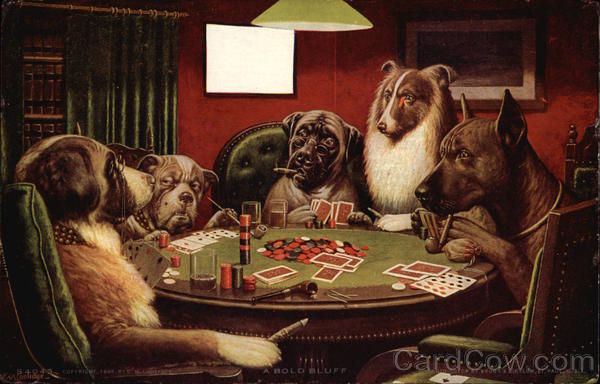What Is A 3 Bet In Poker Terms
Posted : admin On 4/3/2022- What Is A 3 Bet In Poker Terms Against
- What Is A 3 Bet In Poker Terms For Real
- What Is A 3 Bet In Poker Terms Glossary
- What Is A 3 Bet In Poker Terms Free
What is a 3 Bet?
You may have heard the phrase 3 bet watching poker on TV or at your local casino and wondered what it meant. A 3 Bet is the term used in poker to describe a specific re raise. A 3 bet is typically made before the flop but can also be performed post flop. It is the third bet on a specific round. Check out examples below:
Example 1 (Pre-Flop)
Player A calls £5 before the flop, Player B raises to £20, Player C re-raises to £65 from the small blind. This raise by Player C is a “3 bet”. This is effectively the third bet, hence the phrase “3 bet”.
Example 2 (Post-Flop)
Player A raises to £20 and Player B calls from the big blind. The flop is Jh 7s 2d. Player B checks, Player A bets £30 (1st bet) , Player B re-raises to £75 (2nd bet) and Player A puts in re raise to £225 (3rd bet or “3bet”).
What Can 3 Betting Mean?

A 3-bet occurs when the original preflop raiser is re-raised by another player. A 4-bet occurs when a 3-bet is re-raised by any player. What is the definition of the term '3bet'? In poker, a '3bet' occurs when there is a bet, raise and re-raise. The re-raise is the '3bet'. For instance - let's say that you are playing in a cash game.
A decade ago, a 3 bet before the flop usually meant a premium hand (Pocket Jacks or better) however, with the evolution of online poker and aggressive poker strategy, this is no longer the case. A pre flop 3 bet now can be given less credence, particularly with certain players. The context, table demographic and opponent 3 betting are the key factors to be looked at when considering what to do in the face of this move. It is now used to isolate weak players, steal the pot pre flop, exploit a player opening too wide, balance a player’s re raise range or just to have the lead in the hand. This is why observing your opponents, taking notes and understanding their strategy is key to winning. If you know player A knows you are opening 90% of hands on the button and is an observant, thinking player, he is likely to open his range of 3 betting range from the blinds.
What Is A 3 Bet In Poker Terms Against
When Should One 3 Bet?
Context and history is very important. If you are facing a player that is super tight when facing a re-raise, you can 3 bet almost with impunity. On the other hand, if you are facing a maniacal player who has shown tendency to move all in before the flop and 4 bet lightly. You should be more wary about 3 betting with nothing. Perhaps consider lessening your stacking off range and be prepared to hold on.
Conclusion
A 3 bet is an important weapon in a winning player’s arsenal. When used effectively, it can make you feel unbeatable, particularly when you’re doing it with rags. The key thing to remember when 3 betting or facing 3 bets, is making a calculated decision before the flop. Is your opponent likely to be holding a weak hand or not? If not, you are more often than not facing the dreaded Aces or Kings. Playing the player is critical when it comes down to 3 bets.
If you are keen to learn more about 3 betting and how to incorporate them in your game. Feel free to contact us or sign up to our poker training video membership to see how 3 bets can be used in tournaments.
Click below for 10% discount on Simple Poker products
The Three Bet
One of the common definitions you will hear as you play poker is “3-bet”, or “three-bet”. A 3-bet as most players use the term means the act of putting in the third bet, technically the second “raise”, the “3-bet” during any given round of action. It’s only in recent years that the term has become popular, indicative of its use during online play.
For flop games, such as hold’em and Omaha, the pre-flop 3-bet is technically different than the post-flop 3-bet. In these poker games blinds are used, and the act of posting the small and big blinds is considered the first “bet”. Subsequent players, beginning with the “under the gun” (UTG) player to the big blind’s immediate left, have the option of calling that first bet (the amount of the big blind), or folding or raising. In a typical game, the first pre-flop raise is technically a “two-bet”, but you’ll never hear it called that. Instead, it’s when another play makes a second raise, going over the top of the first raiser, that the “three-bet” term is used. Below is a visual of what a pre-flop 3-bet looks like.
In post-flop play, the 3-bet consists of an initial bet, a raise, and then a re-raise (perhaps by the initial bettor). Since the initial bet itself can be sizable, the post-flop 3-bet is proportionately larger in most instances than its pre-flop counterpart. In cash games and in the late stages of tourneys, 3-bets often involve all-in moves by one or more players, though you’re just as likely to hear the words “pushing” or “jamming” (moving one’s entire stack into the middle) in those instances.
What Does a 3-Bet Mean?
A 3-bet, which is always a form of a re-raise is designed to be an indicator of a true premium hand. The 3-bet is a shot over the bow of the initial raiser, designed to capture that pot right there. The intent of the 3-bet is to say to the initial bettor, “Yeah, you may have a good hand, but I’ve got a better one.” One common variation involves the initial raise coming from a late position, the button player or the cut-off (to the button’s immediate right), and the 3-bet is made by the small or big blind, who may assume the button or cutoff is attempting to steal the blinds. Overall, the 3-bet is traditionally one of the strongest moves a player can make, trailing perhaps only the all-in push and the check-raise in its ability to change a hand. It’s supposed to mean that the player making the move has a very strong hand, though this being poker, that is not always the case.
Making Your Own 3-Bets
The use of 3-bets is best done selectively, at opportune moments. Many hyper-aggressive players 3-bet with a wide range of hands, including many garbage hands, in the nature of bluffs. Most 3-bets, however, are done with big hands.
What Is A 3 Bet In Poker Terms For Real
When to 3-bet a hand and when to just call (called a “smooth call” or “smoothing”) is one of the trickiest lessons players must learn. Knowing your opponents’ tendencies is vital to success, because the best poker players play their opponents as much as their own hands. A 3-bet works best against fairly loose players, some of whom are described as “calling stations”, who simply cannot fold marginal holdings when prompted. Another successful type of 3-bet can be done against a player who might over-value the long-term prospects of the game or tourney in deference to what might happen in that specific hand. He might be surrendering a bit too much of his chance to win in hopes of getting a better opportunity in a later hand.
Then there are bluffs. The bluff type of 3-bet is called a “re-steal”, and properly executed, it can be one of the most profitable moves in a player’s arsenal. However, like any good play, using it too much is one of the quickest ways to go broke. Other players will eventually react to a player that is putting in too many 3-bets, and sooner or later, the player putting in those over-the-top bets will be “looked up” (called) by his opponent. However, if you’re a steady, conservative player, 3-betting an aggressive foe will work more often than you might believe. Those players are trying to steadily make small gains against your perceived, relative passivity, and when you fight back they’ll often go try another door.
Defending Against the 3-Bet
What Is A 3 Bet In Poker Terms Glossary
Defending against the 3-bet boils down to understanding both your opponents and the circumstances of the game. Against a tight opponent who plays few hands, a 3-bet invariably means a monster and you can ditch all but the largest hands against this opponent. Even if he’s on a rare bluff, his natural tendencies against bluffing should serve as a warning.
What Is A 3 Bet In Poker Terms Free

Aggressive, late-position players will often three-bet with holdings such as middle pairs, AK or AQ, and depending on your own hand, it’s often correct to play or even to put the 4-bet in and take your chances. Be aware that with position and with correct “pot odds” – referring to the relationship between the amount of money already in the pot and the total amount a player stands to win – a late-position player may be “priced in” to making his own call with more inferior hands than you might hope.
Author:Joseph Falchetti (twitter)
(C) Copyright PokerWebsites.com, 2018